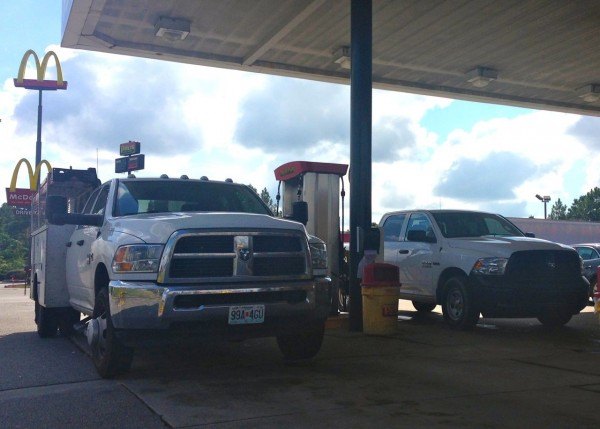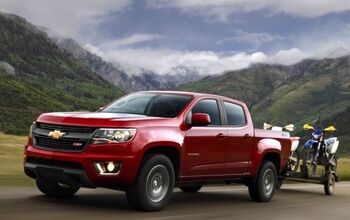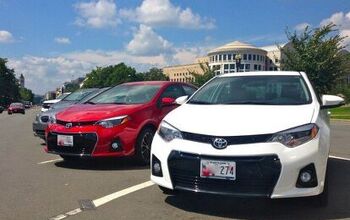Best Selling Cars Around The Globe: Coast to Coast 2014 – Savannah GA
Now that we have gone through New York City, Washington DC through Virginia, North & South Carolina and Charleston, it’s time to travel further South along the East Coast of the United States and the Interstate 95 to Georgia – the birthplace of Martin Luther King Jr and Ray Charles. But first, I’ll give you my first impressions on running a full-size pick-up on diesel in the US.
Full report below the jump…
By now I have had the opportunity to fill up Albert – my Ram 1500 EcoDiesel for the trip – a couple of times and test his range: approximately 660 miles (1060 km), which is more than I expected. I also ended up spending less money than I thought (US$77) to rejuvenate Albert with 20 gallons of diesel so he could continue to faithfully lead me along in this Coast to Coast trip.
A few quirks about running on diesel in the US: as opposed to France for example where up to 80% of new cars sold in the country run on diesel, not all service stations offer diesel, especially when you step away from the main highways -an interesting find when you start to run low and the next 3 stations you pass only have unleaded. On highway exits, I would say on average 50% to 75% of stations have offered diesel so far.
The other big surprise is the price. In Europe, one of the main reasons for choosing a diesel vehicle – on top of the fact that it is more fuel efficient – is its price, significantly lower than unleaded although that price difference has narrowed over the past few years. In the US, diesel is always more expensive, by at least 50 cents a gallon – a very significant margin. Starting off in New York where gas prices are much higher($4.50+ a gallon), I have noticed prices going down steadily as I was driving South to reach about $3.15 a gallon (unleaded) and $3.65 (diesel).
Third surprise: for diesel, prices differ depending on your method of payment, with credit a full 6 cents per gallon more expensive than cash. I had never encountered that type of distinction before, and this does not apply to unleaded (for now). Most Americans don’t actually need to walk inside the station’s building if they’re paying with a card, as all pumps are equipped with swipe machines. Having a non-American credit card, I had to pay in advance each time and I had estimated (and paid) my first fill-up to be $100 but the pump put on full stops at ‘only’ $77.
Lastly, an update on Albert’s fuel economy, now standing at an excellent 27.1 mpg after a little bit more than 1,000 miles travelled (1,600 km). This Ram 1500 EcoDiesel 4×4’s advertised fuel economy being 27 mpg highway, we are now right on target, even though my trip hasn’t been all highway.
Onto the Savannah vehicle landscape, and although we are only 107 miles away from Charleston, this is a different state and a different landscape altogether. Georgia is another Ford F-Series State but for the first time during this trip, the Chevrolet Silverado is genuinely threatening it for the title of most frequent vehicle spotted in the streets of Savannah, making the Silverado Work Truck (with black plastic grille and bumpers like Albert) the Hero in Town.
While in Charleston the Ford F250 was surprisingly more popular that its little brother the F150, in Savannah the ‘logical’ order is back with the F150 seemingly more successful. However even when adding up F150, F250 and F350, we still only come level with the new generation Silverado. But wait there are more surprises in the Savannah vehicle landscape…
Based on my observations uptown, downtown, in Garden City, Port Wentworth, Vernon River and the Isle of Hope, along with the Silverado/F-Series tandem, other very successful models here include the GMC Sierra, surprisingly frequent, the Toyota Corolla – seemingly the most popular new passenger car in town, the Toyota Tundra back to levels last seen in Northern Virginia, the Ram pick-up, Honda Accord and Toyota Tacoma, also way above its national level here in Savannah. That’s it for the Southern belle, next we are crossing Georgia on our way to Nashville, Tennessee…
Matt Gasnier is based in Sydney, Australia and writes a blog dedicated to tracking car sales around the globe: BestSellingCarsBlog
More by Matt Gasnier
Latest Car Reviews
Read moreLatest Product Reviews
Read moreRecent Comments
- Lou_BC Well, I'd be impressed if this was in a ZR2. LOL
- Lou_BC This is my shocked face 😲 Hope formatting doesn't fook this up LOL
- Lou_BC Junior? Would that be a Beta Romeo?
- Lou_BC Gotta fix that formatting problem. What a pile of bullsh!t. Are longer posts costing TTAC money? FOOK
- Lou_BC 1.Honda: 6,334,825 vehicles potentially affected2.Ford: 6,152,6143.Kia America: 3,110,4474.Chrysler: 2,732,3985.General Motors: 2,021,0336.Nissan North America: 1,804,4437.Mercedes-Benz USA: 478,1738.Volkswagen Group of America: 453,7639.BMW of North America: 340,24910.Daimler Trucks North America: 261,959









































Comments
Join the conversation
I spend half my time working in Savannah. I wonder if you noticed the plethora of Scion XB's, Nissan Cubes and Kia Souls there. SCAD (an Art College which dominates downtown) is the most expensive college in the USA (USA today) and has the highest Asian % of students. Who love these.
The difference in pricing for cash and credit goes back at least to the second (US) gas crisis. Most gas companies at the time had their own credit card and the companies were pretty generous in handing them out. However the gas companies charged the retailer a percentage of the sale for processing. To hold the line on prices many stations started offering cash discounts. Since they were using the old mechanical pumps they posted a cheat sheet of how much off the total you got for paying cash based on the number of gallons displayed. So if you wanted to put say $10 in you would pump until you got around $10 and look at how many gallons you had pumped so far looked at the chart see how much extra to pump so you had an even $10. Arco then "blew up their credit cards" which cemented the two different prices. The standard became 5 cents/gallon for many years. Eventually one by one in my area the different prices for cash and credit pretty much went away. However Arco, now owned by BP, caused a shift in the market again by eliminating the fee for debit cards which they had for years and started accepting credit cards again but at 10 cents more per gallon at least on regular. The other interesting shift has been that many stations don't have the 10 cents per grade difference that had been the standard for years. I've noticed a few stations where the pricing is anything but uniform with sometimes super being 25 cents more than regular for cash but only 20 cents more for credit and sometimes the opposite. I've also seen differences between cash discount/credit premium for unleaded, diesel and E85 at the same station. I was traveling through central CA a few years ago I stopped at a station near the freeway in a smaller town. They charged an extra 20 cents per gallon for using credit but over at the E85 and diesels pump it was the same price cash or credit. I was happy to be driving a FFV at the time. I'm guessing they didn't do it for the Diesel and E85 is because the local farmers use the diesel while the city county fleet buys the E85.